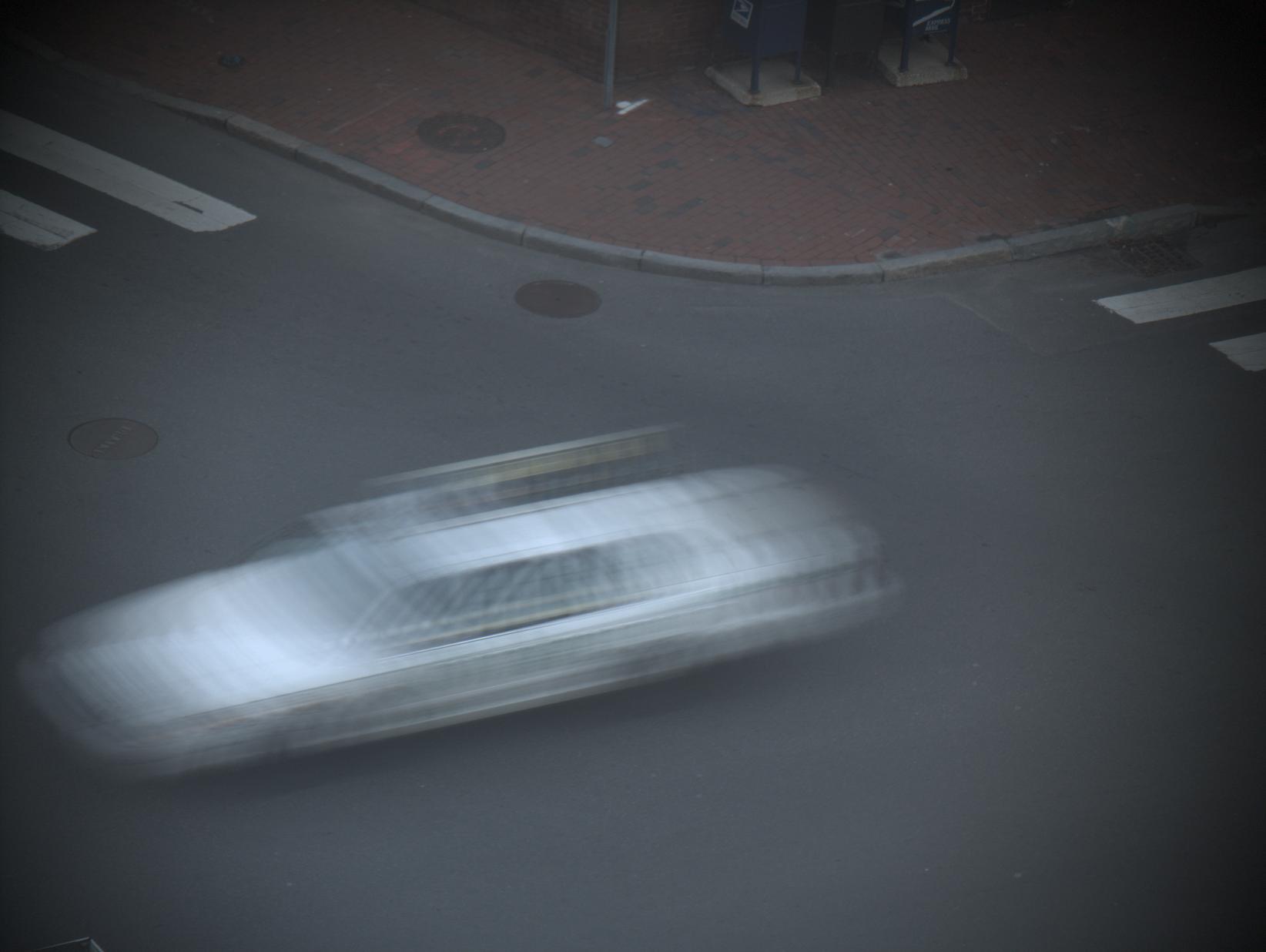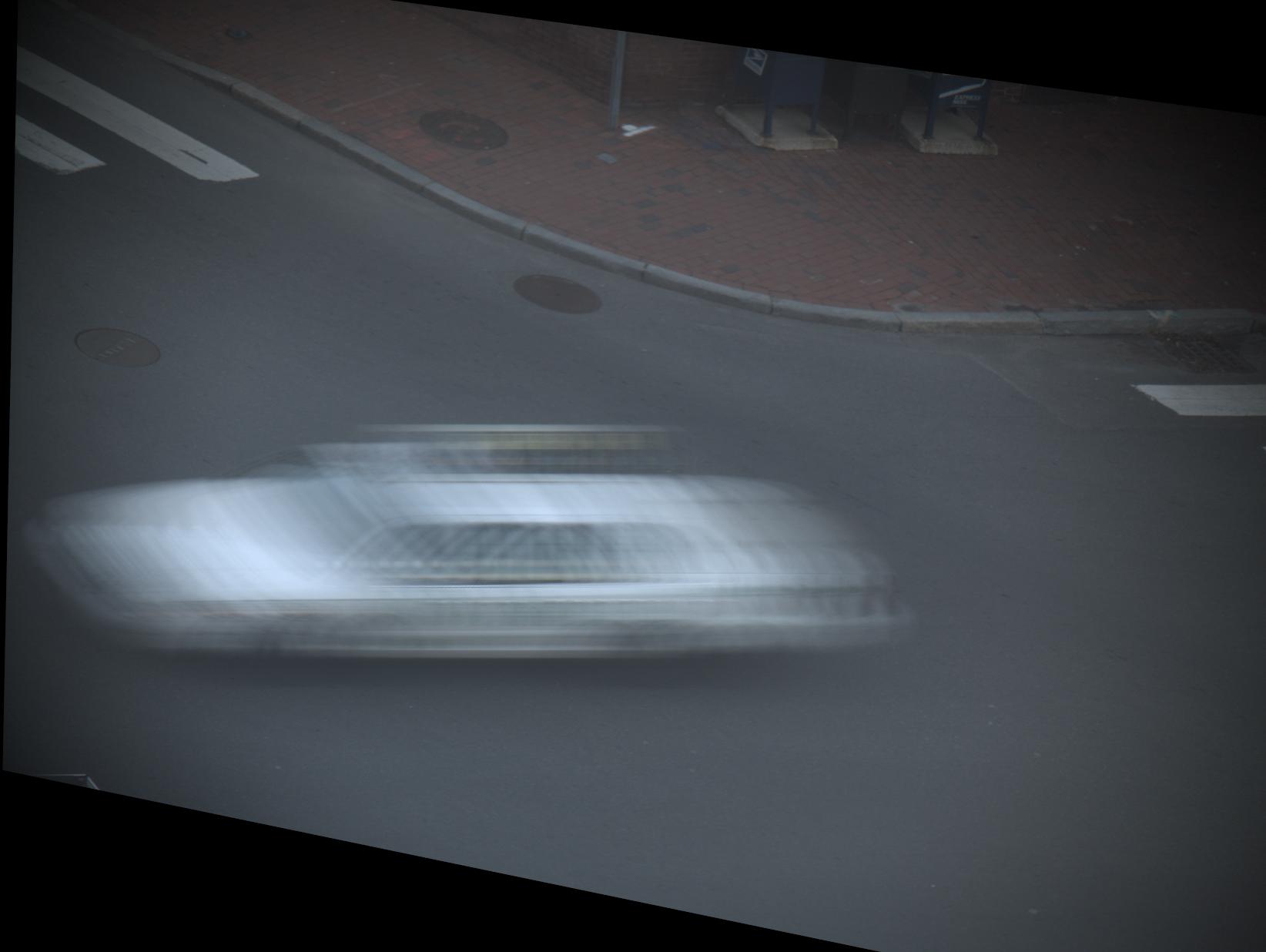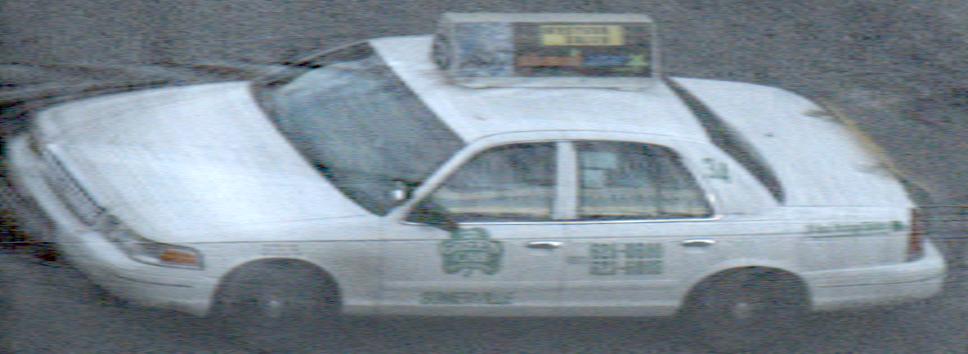Coded Exposure Photography: Motion Deblurring using Fluttered Shutter
Ramesh Raskar, Amit Agrawal, and Jack Tumblin
ACM SIGGRAPH 2006
Low res pdf, Matlab Code and Images, High res pdf
Slides
(As presented with No
text on any slide),(With
text on slides),
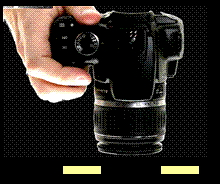
Abstract:
In a conventional single-exposure photograph, moving objects or moving cameras cause motion blur. The exposure time defines a temporal box
filter that smears the moving object across the image by convolution. This box filter destroys important high-frequency spatial details
so that deblurring via deconvolution becomes an ill-posed problem.
Rather than leaving the shutter open for the entire exposure duration, we ``flutter'' the camera's shutter open and closed during the
chosen exposure time with a binary pseudo-random sequence. The flutter changes the box filter to a broad-band filter that preserves
high-frequency spatial details in the blurred image and the corresponding deconvolution becomes a well-posed problem. We demonstrate that
manually-specified point spread functions are sufficient for several challenging cases of motion-blur removal including extremely large
motions, textured backgrounds and partial occluders.
Top left shows image of a fast moving taxi captured using our new camera. Bottom left shows the rectified image to make motion lines
parallel to scan lines. An approximate cutout of the blurred object is shown in top right. The deblurred image obtained by solving a
linear system is shown in bottom right. Note that all high frequencies are recovered and there are no deconvolution artifacts.
Key idea and differences with previous methods:
Motion deblurring is an ill-posed problem. The relative motion between camera and the scene results in a blurred image in
which high frequencies are lost, due to which deblurring results in increased noise, ringing and other artifacts. Note that this is
independent of the deblurring algorithm used. As soon as the image is captured, high frequencies are lost and the damage is done.
In this paper, we propose a novel coded exposure camera and show that by fluttering the shutter in a single exposure, one can
retain high frequencies. The deblurring then become a well-posed problem. Our approach is thus fundamentally different from other
deblurring algorithms. In fact, we use the simplest possible deconvolution approach: solving a linear system AX=B to recover
the sharp image X from the blurred image B and show high quality results with large motion blurs (~300 pixels) with no ringing and
deconvolution artifacts. The change in hardware amounts to putting an external ferro-electric shutter in front of the lens,
synchronized with the start of the exposure time and can be done on any off the shelf digital camera.
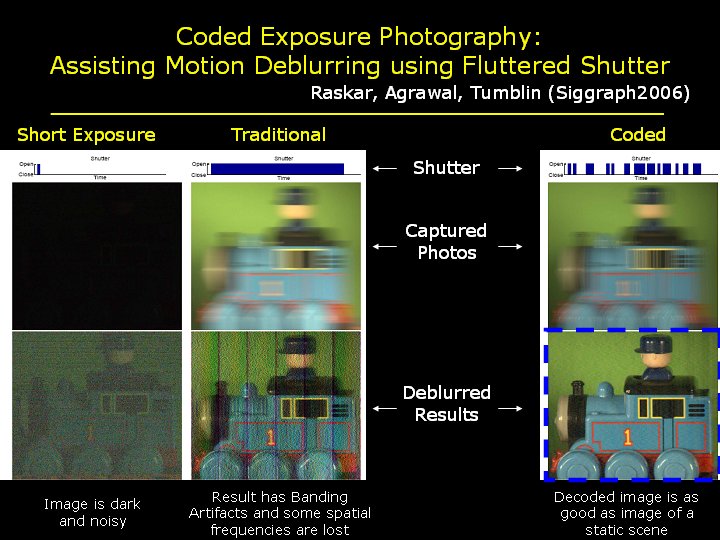
Comparison of Short
Exposure, Traditional Camera, and Coded Exposure Camera
|
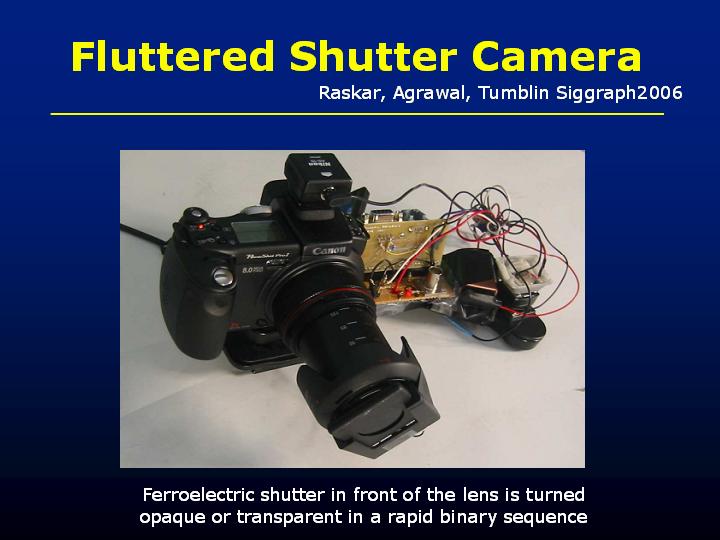
Our portable prototype camera
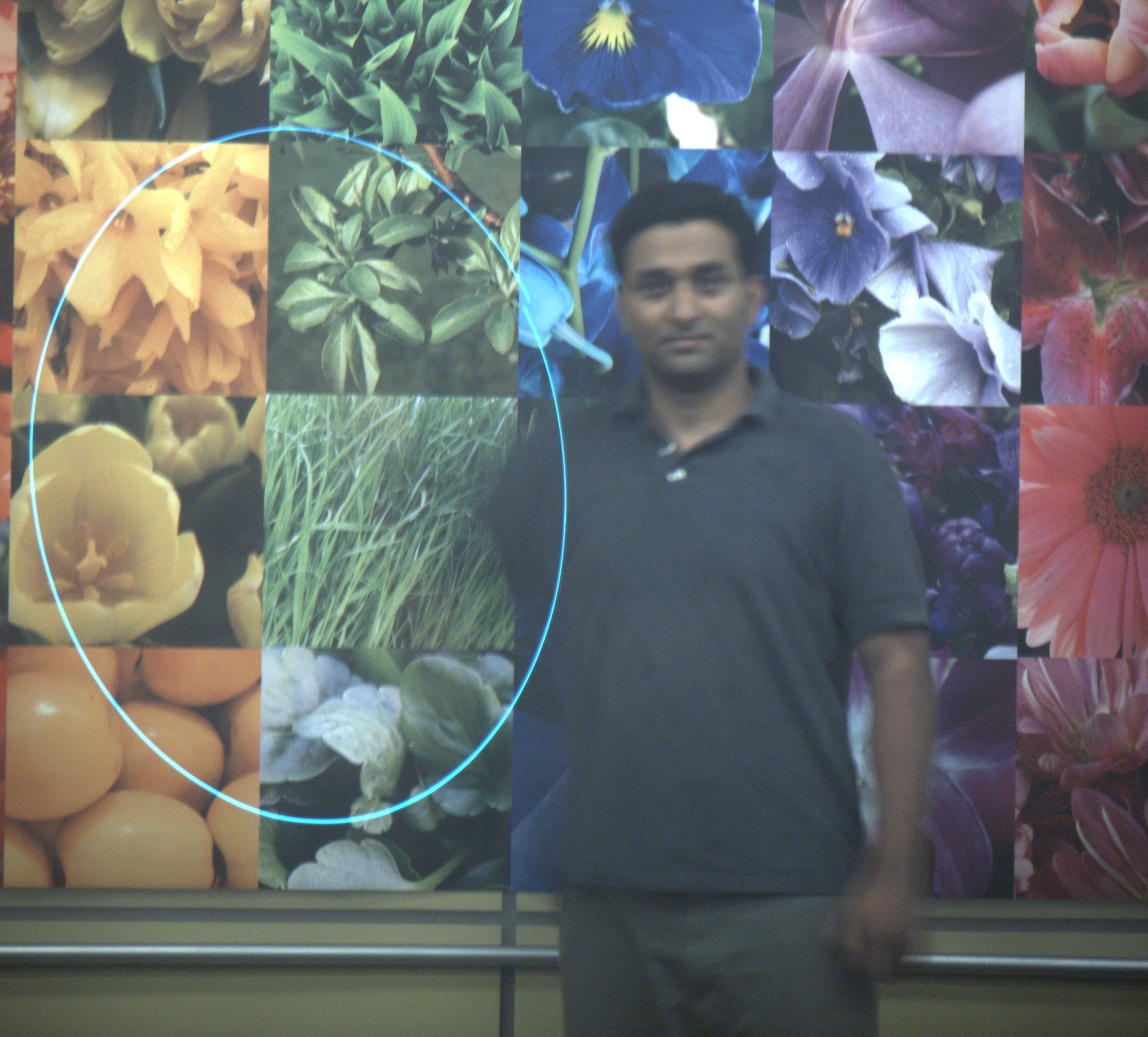
Picture taken with a traditional camera
|
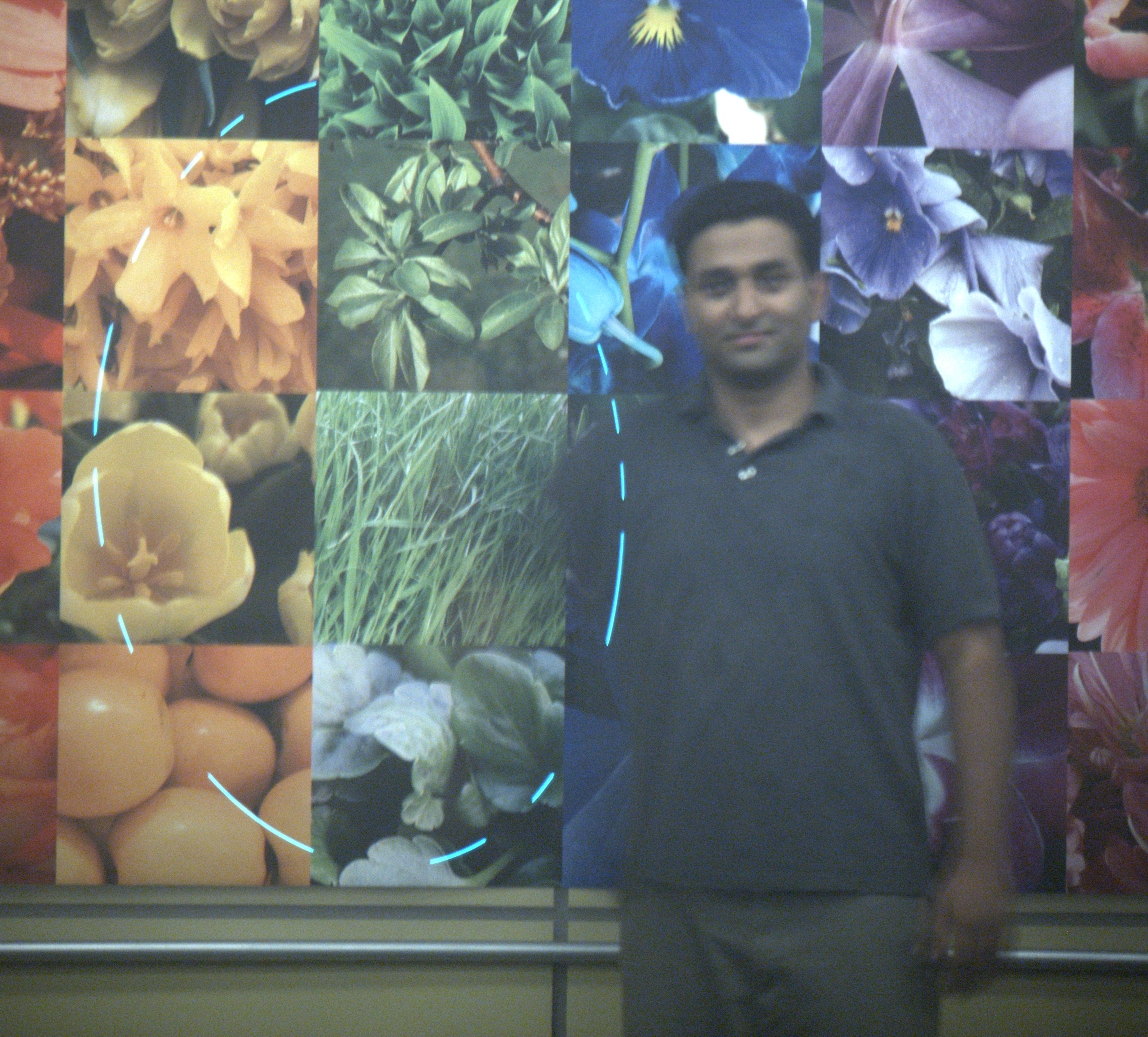
Picture taken with our camera
|
The above two images
shows comparison of images taken with a traditional camera and coded
exposure camera. A bright LED (light emitting diode) is moved rapidly
in front of the camera by a person. For traditional camera, the image
of LED is a continuous smear (on left). For coded exposure, due to
fluttering of the shutter, the smear becomes discontinuous preserving
high frequencies (on right).
|
|
Additional Results
Outdoor Taxi
Comparisons with Short Exposure and Traditional Camera
License Plate Retrieval from Blurred Image
Related Papers:
Resolving Objects at Higher Resolution from a Single Motion-Blurred Image, CVPR 2007
Dappled Photography: Mask Enahnced Cameras for Heterodyned Light Fields and Coded Aperture Refocusing, SIGGRAPH 2007
|
|

